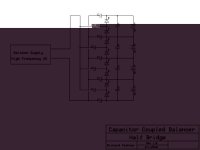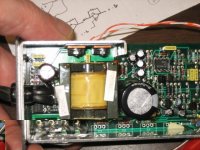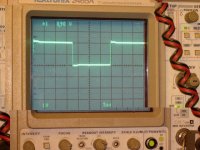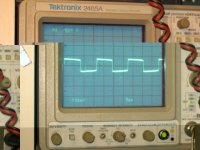krneki said:Now someone can educate me. To my best knowledge capacitive charge transfer is inherently inefficient. When you charge capacitor through resistor, the same amount of energy that is dumped into the capacitor is also lost in the charging resistance, irrespective of the value of R and C. Is there a way to higher efficiency with those capacitive circuits?
That's true if you connect a fully charged cap to a fully discharged one.
In the capacitor coupled circuit, each cycle only transfers a small percentage of the cap's charge. This is much like a switched capacitor charge pump, and those can run as high as 98% efficient.
As long as none of the parts get too hot and the total heat dissipation for the whole thing is fairly low (so I don't need a fan), then I'm not so concerned with the efficiency of the balancing current. Most of the pack's charge will come from the main charger, so the efficiency of that is much more important.









